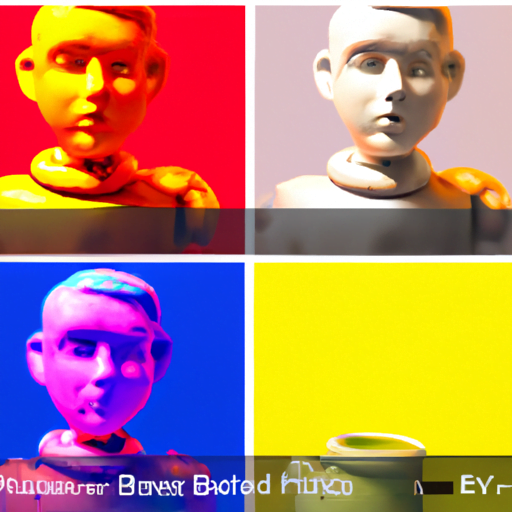-
Table of Contents
- Beyond Pixels: AI’s Role in 3D Modeling and Rendering
- The Evolution of 3D Modeling and Rendering
- The Rise of AI in 3D Modeling and Rendering
- 1. Automated 3D Modeling
- 2. Realistic Rendering
- The Impact of AI in the Industry
- The Future of AI in 3D Modeling and Rendering
- 1. Generative AI for Design Exploration
- 2. Real-time Ray Tracing
- 3. AI-assisted Content Creation
- Summary
Beyond Pixels: AI’s Role in 3D Modeling and Rendering
Artificial Intelligence (AI) has revolutionized various industries, and the world of 3D modeling and rendering is no exception. With advancements in AI technology, traditional methods of creating 3D models and rendering scenes have been transformed, allowing for more realistic and efficient results. In this article, we will explore the role of AI in 3D modeling and rendering, its impact on the industry, and the potential it holds for the future.
The Evolution of 3D Modeling and Rendering
Before delving into the role of AI, it is important to understand the evolution of 3D modeling and rendering. Traditionally, 3D models were created manually by artists using specialized software. This process involved painstakingly sculpting and shaping each individual object, which was time-consuming and required a high level of skill.
Similarly, rendering scenes involved complex calculations to simulate lighting, shadows, and textures. These calculations required significant computational power and often took hours or even days to complete. As a result, the process of creating realistic 3D models and rendering scenes was slow and resource-intensive.
The Rise of AI in 3D Modeling and Rendering
AI has brought about a paradigm shift in the field of 3D modeling and rendering. By leveraging machine learning algorithms, AI can analyze vast amounts of data and learn patterns, enabling it to automate and optimize various aspects of the process.
1. Automated 3D Modeling
One of the key contributions of AI in 3D modeling is automated model generation. AI algorithms can analyze existing 3D models and learn the underlying patterns and structures. This knowledge can then be used to generate new models automatically, saving artists significant time and effort.
For example, researchers at Stanford University developed an AI system called “ShapeNet” that can generate 3D models of objects from 2D images. By training the AI on a large dataset of images and corresponding 3D models, the system can infer the 3D structure of an object from a single image. This technology has applications in various fields, such as architecture, product design, and virtual reality.
2. Realistic Rendering
AI has also made significant advancements in realistic rendering. By analyzing large datasets of real-world images, AI algorithms can learn to simulate lighting, shadows, and textures with remarkable accuracy. This allows for faster and more realistic rendering of 3D scenes.
For instance, NVIDIA’s “DLSS” (Deep Learning Super Sampling) technology uses AI to upscale lower-resolution images in real-time, resulting in higher-quality visuals without sacrificing performance. This technology has been widely adopted in the gaming industry, where real-time rendering is crucial for a seamless gaming experience.
The Impact of AI in the Industry
The integration of AI in 3D modeling and rendering has had a profound impact on the industry. Here are some key ways in which AI has transformed the field:
- Increased Efficiency: AI algorithms can automate repetitive tasks, allowing artists to focus on more creative aspects of the process. This has significantly reduced the time and effort required to create 3D models and render scenes.
- Improved Realism: AI-powered rendering techniques have made it possible to achieve unprecedented levels of realism in 3D scenes. This has opened up new possibilities in industries such as film, gaming, and virtual reality.
- Cost Reduction: By automating certain aspects of the process, AI has reduced the need for manual labor and expensive hardware. This has made 3D modeling and rendering more accessible to a wider range of industries and individuals.
The Future of AI in 3D Modeling and Rendering
The potential of AI in 3D modeling and rendering is vast, and we are only scratching the surface of what it can achieve. Here are some exciting possibilities for the future:
1. Generative AI for Design Exploration
Generative AI algorithms can create multiple design variations based on given constraints and objectives. This can be particularly useful in architecture and product design, where designers can explore a wide range of possibilities quickly and efficiently.
2. Real-time Ray Tracing
Ray tracing is a rendering technique that simulates the behavior of light in a scene, resulting in highly realistic visuals. However, traditional ray tracing methods are computationally expensive and time-consuming. AI-powered real-time ray tracing algorithms can significantly accelerate this process, making it feasible for real-time applications such as gaming and virtual reality.
3. AI-assisted Content Creation
AI algorithms can analyze large datasets of existing 3D models and scenes to generate suggestions and recommendations for artists. This can help streamline the creative process and inspire new ideas.
Summary
AI has revolutionized the field of 3D modeling and rendering, enabling automated model generation and realistic rendering. The integration of AI has increased efficiency, improved realism, and reduced costs in the industry. The future holds even more exciting possibilities, including generative AI for design exploration, real-time ray tracing, and AI-assisted content creation. As AI continues to advance, we can expect further advancements in the field of 3D modeling and rendering, pushing the boundaries of what is possible.
